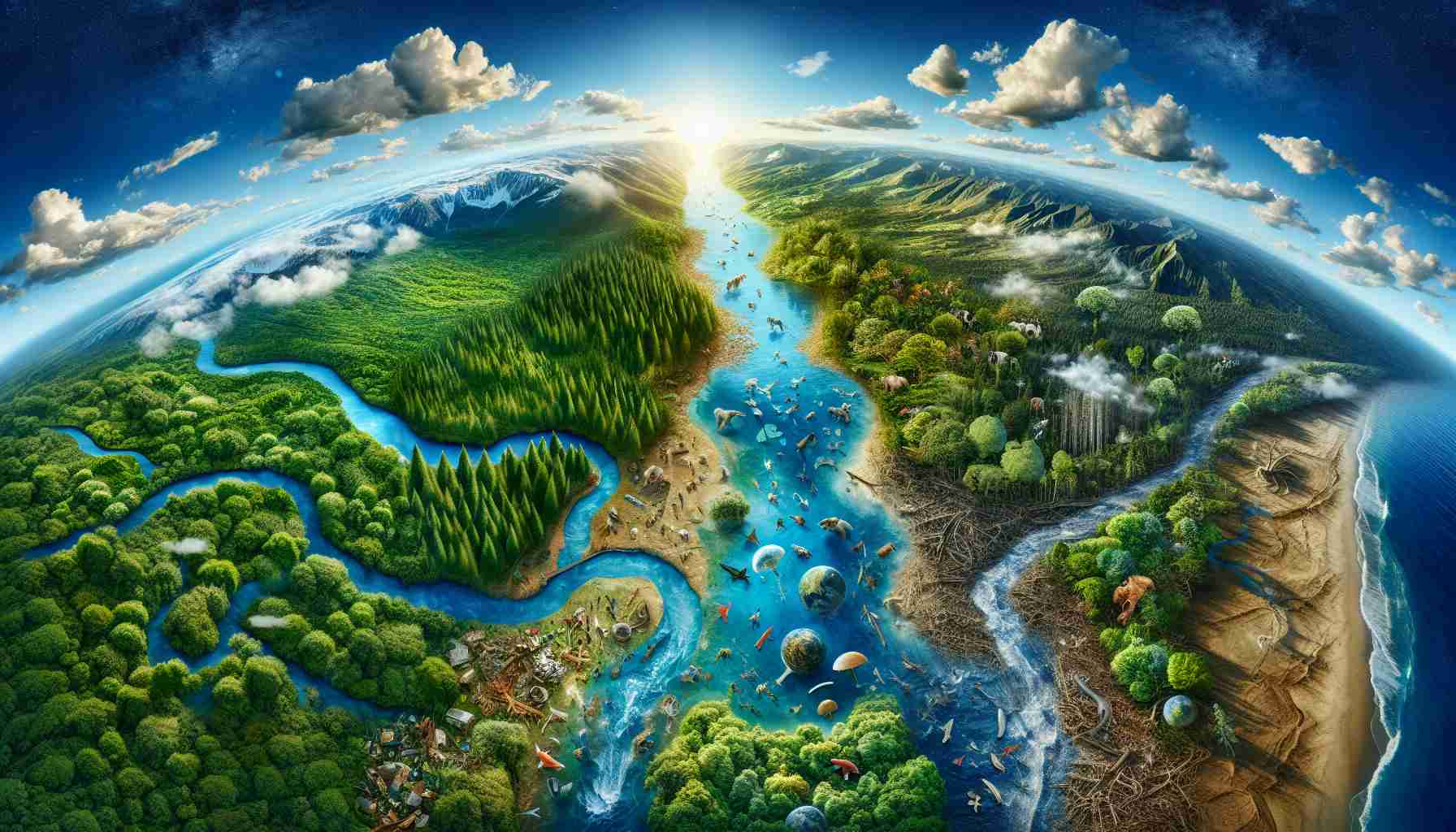Emerging Insights into Environmental Conservation
Recent studies underscore the critical state of our planet’s biodiversity. A significant number of species face threats due to habitat loss and climate change, with researchers highlighting the necessity for urgent conservation efforts.
Scientists emphasize the interconnectedness of ecosystems and warn that the decline of even a single species can have cascading effects on others. They stress the importance of protecting natural habitats to support flora and fauna. Additionally, innovative research is revealing the crucial role of indigenous knowledge in preserving biodiversity.
The findings urge policymakers to prioritize sustainable practices, aiming for a balance between human activities and environmental wellbeing. This includes promoting reforestation, establishing protected areas, and implementing sustainable agriculture.
Furthermore, public engagement in conservation efforts has shown promising results, with community-led projects successfully reviving local ecosystems. Awareness campaigns are vital for encouraging responsible consumption and fostering a culture of sustainability.
In light of these revelations, urgent action is needed now more than ever. Scholars are calling for collaborative efforts between governments, organizations, and local communities to safeguard our planet’s natural resources for future generations. The time to act is now, and every contribution counts in the fight against biodiversity loss.
Broader Implications of Environmental Conservation
The importance of environmental conservation extends beyond mere biodiversity; it shapes the fabric of society and influences global economies. As species continue to decline, we risk destabilizing ecosystems that support vital services, such as pollination, water purification, and climate regulation. The economic ramifications are profound: a 2020 study estimated that the loss of biodiversity could cost the global economy up to $500 billion annually due to reduced agricultural yields and increased disaster recovery costs.
Culturally, the preservation of biodiversity enhances our collective identity. Indigenous populations, who play a pivotal role in conservation through their traditional practices, symbolize a profound connection to the land. Their continued marginalization could erase centuries of ecological wisdom, undermining cultural diversity. By fostering an inclusive dialogue that values indigenous contributions, societies can enrich conservation efforts, benefitting both people and wildlife.
Moreover, the shift toward sustainable practices is becoming a global trend, driven by consumer demand for eco-friendly products. Major corporations are increasingly adopting sustainable supply chains, realizing that environmental responsibility can enhance brand loyalty and market competitiveness.
Looking to the future, as climate change accelerates, the need for adaptive conservation strategies will only intensify. The long-term significance of these efforts cannot be overstated; through dedicated collective action, we have the potential to not only protect our planet’s resources but to also ensure a healthier society for generations to come. The change starts now, and every decision we make contributes to a more sustainable future.
Urgent Call to Action: How We Can Save Our Planet’s Biodiversity
The Dire State of Biodiversity
Recent research highlights an alarming decline in global biodiversity, with numerous species facing extinction due to habitat destruction and the effects of climate change. According to a 2022 report by the Intergovernmental Science-Policy Platform on Biodiversity and Ecosystem Services (IPBES), approximately 1 million species are at risk of extinction within the next few decades unless decisive action is taken.
The Interconnectedness of Ecosystems
Scientists warn that the health of one species heavily influences the entire ecosystem. For instance, the loss of pollinators like bees not only threatens plant life but can disrupt entire food chains, impacting species far removed from the initial change. This interconnectedness means that conservation efforts must be holistic, addressing multiple species and habitats simultaneously.
Indigenous Knowledge: A Key Component
Emerging studies emphasize the important role of indigenous communities in conservation efforts. Indigenous peoples possess invaluable traditional ecological knowledge that can enhance our understanding of local ecosystems. Collaborating with these communities often results in more effective and sustainable conservation strategies.
Sustainable Practices To Implement
To combat these pressing issues, several sustainable practices have been suggested:
– Reforestation and Afforestation: Planting trees not only helps restore natural habitats but also absorbs carbon dioxide, aiding in climate change mitigation.
– Establishing Protected Areas: Designating national parks and wildlife reserves helps to conserve critical habitats and safeguard endangered species.
– Sustainable Agriculture: Implementing practices that minimize environmental impact can ensure food security while protecting ecosystems.
The Power of Community Engagement
Community engagement in conservation has yielded positive results. Residents in various regions have successfully revived local ecosystems through initiatives like community gardens and clean-up drives. Such grassroots movements highlight the profound impact that collective action can have.
Challenges and Limitations
Despite the potential for positive change, numerous barriers hinder conservation efforts, including:
– Funding Constraints: Many conservation projects lack adequate financial resources, limiting their reach and effectiveness.
– Policy Gaps: Inconsistent environmental policies can create challenges in implementing conservation strategies on a larger scale.
– Public Awareness: While engagement is vital, many individuals remain unaware of the urgency of biodiversity loss.
Trends and Future Directions
As global awareness of environmental issues rises, innovative technologies like remote sensing and artificial intelligence are being used to monitor ecosystems and species populations in real-time. These advancements are paving the way for more precise and effective conservation strategies.
The Call for Collaborative Efforts
Urgent action from all sectors—governments, organizations, and local communities—is essential to tackle these challenges. Collaborations that leverage collective resources, knowledge, and efforts can strengthen conservation initiatives.
Conclusion: Act Now!
As the clock ticks down on biodiversity loss, the time to act is now. With every small contribution—whether through responsible consumption or active involvement in conservation initiatives—individuals can play a significant role in safeguarding our planet for future generations.
For more information on how to contribute to conservation efforts, visit World Wildlife Fund.







